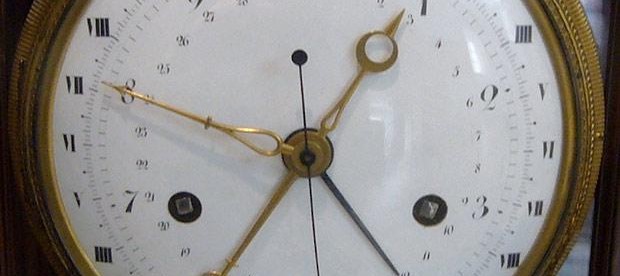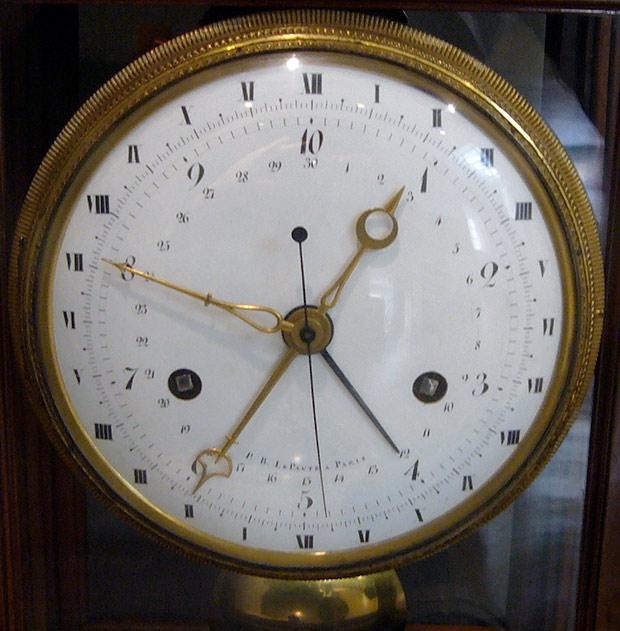There are 24 hours in a day, seven days in a week, and (roughly) 365 days in a year. There are 60 minutes in an hour and 60 seconds in a minute. You probably knew all that. But you know it because you’ve committed it to memory — it’s not something you can reason out. A lot of measurements — at least in areas that haven’t switched to the Metric system — suffer from that design flaw. Instead of there being a base unit (say, a meter) with other units simply being some power of ten larger or smaller (kilometers, centimeters, to further our example), we end up with 7s and 24s and 60s and all sorts of other numbers which do not match the number of fingers we have.
It’s not entirely clear why our days have two 12-hour halves or why our hours have 60 minutes of 60 seconds each. Per Scientific America, the ancient Egyptians are possibly the culprit — “the importance of the number 12 is typically attributed either to the fact that it equals the number of lunar cycles in a year or the number of finger joints on each hand (three in each of the four fingers, excluding the thumb), making it possible to count to 12 with the thumb.” Or maybe it’s the ancient Babylonians, who, for some reason, used a base 60 system. (And note, 60 is just 12 times five.) But neither of those two measures are as important as they used to be. So, why haven’t we switched to decimal time?
Well, if the French Revolution is any indication, it’s because regular people don’t really care about the math behind the clock.
Starting in the 1750s and continuing onward, a handful of philosophers and mathematicians began to write about their struggles with the base 12 system — it seemed counterintuitive or, at least, antiquated. The same was true for other aspects of the non-base 10 world, particularly weights and measures. Why are there 12 inches to a foot? Or 14 pounds to a stone?
When the French revolted against the monarchy forty-something years later, the political upheaval spread beyond politics and into this realm. After the storming of the Bastille, the French nobility made many concessions to the revolutionary forces, among which was relinquishing control over what were official weights and measures. (If you control how things are measured, you can control the results.) This became the first major foray into the metric system, even though it didn’t stick immediately. (France dropped this precursor to the modern metric system in 1812 and re-adopted a new one in 1837. If you want to learn more, the “history of the metric system” entry on Wikipedia is an interesting, but long, read.)
But the revolutionaries weren’t only concerned with pounds and inches; they also tried to reform the minutes and hours, too, using something now called “French Revolutionary Time” or “French Republican Time,” depending on which source you go by. The idea was simple — ten hour days, with each hour consisting of 100 minutes, and each new minute made up of 100 seconds. On November 24, 1793, per Mental Floss, this base 10 system became the law of the land, and clockmakers began to produce things like the item depicted above to further those efforts. As you can see, the two center rings are base 100 and 10, respectively from the center out, while the traditional time is measured on the outside rings. The arm of the clock pointing at 8 o’clock in the new system is also pointing to a few minutes before 7:15 PM in the old system.
And the change didn’t stop there. Gone were seven day weeks — they were replaced by a ten-day week. Each month was now 30 days, no more, no less, each made up three weeks. There were still 12 months, in order to make the math work out correctly (roughly), but each month was renamed to reflect the seasons as experienced by someone in Paris. Five or six (on leap years) celebratory days came at the end of the year, bringing us to the same 365 days in the current calendar.
Or, at least, that was what the law said. In practice, people didn’t really care to change how they kept time — as Mental Floss further notes, unlike weights and measures, which impacted trade and commerce, “there were few practical reasons for non-mathematicians to change how they told time.” The base 12 system was good enough — plus, their clocks didn’t need to be replaced, which sounds like a silly reason, but the cost of changing over every single clock was significant.
Failing to get the people on board, the new government ultimately gave up the effort. The decimal time experiment lasted less than 18 (regular) months; by spring of 1795, the French leadership dropped the edict.
Bonus fact: The Babylonians’ base 60 system probably had a practical reason behind it. The number 60 is the lowest number that has the numbers 1, 2, 3, 4, 5, and 6 as factors, allowing for the easy and equal division of tangible goods among different sets of group.












